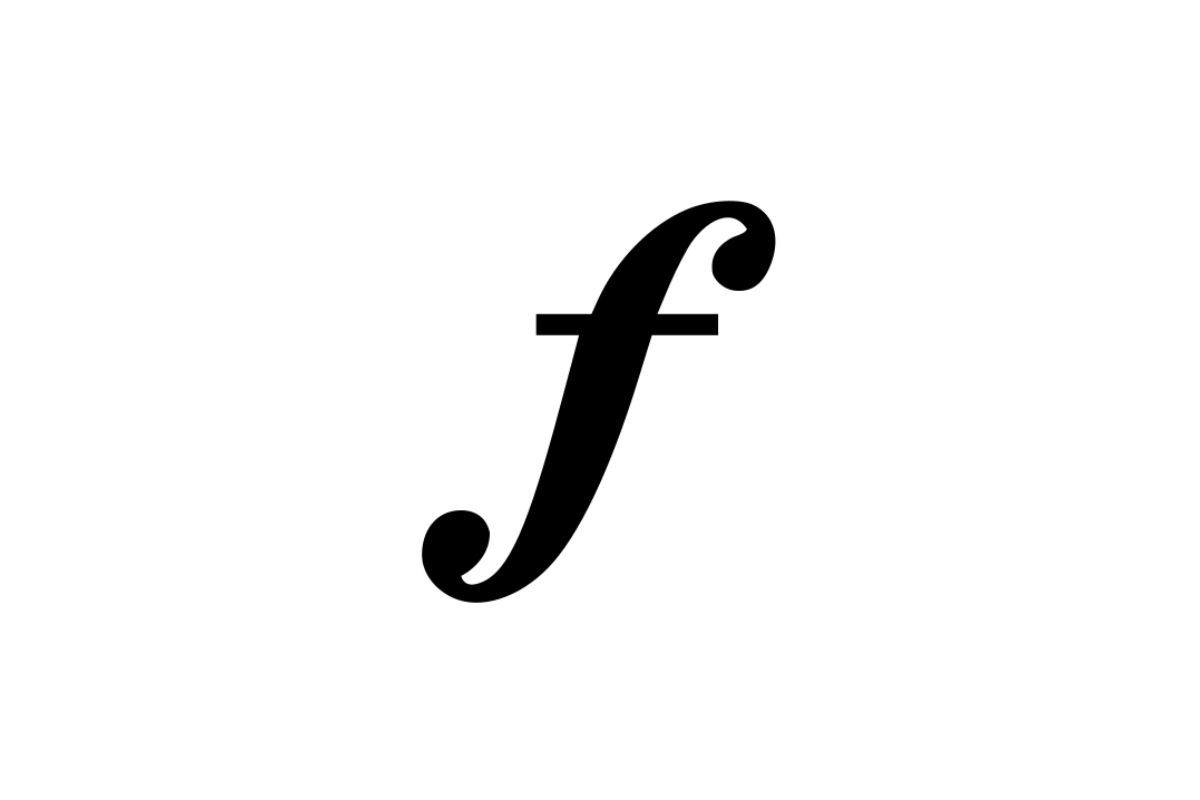In the realm of music, certain terms hold the key to unlocking the emotions and intensity hidden within compositions. One such term that commands attention is “forte.” If you’ve ever found yourself captivated by the powerful surges of sound in a symphony or mesmerized by the forceful chords of a piano, understanding what “forte” means is essential. In this blog, we embark on a harmonious exploration of the musical realm, unraveling the true significance of “forte” and its impact on compositions.
What does forte mean? Forte is a musical term that refers to a section played with increased volume, louder than the average speaking voice but not as thunderous as fortissimo. It’s all about finding that sweet spot in the dynamic range where your music truly shines.
What is forte?
Generally speaking, forte refers to a volume that’s above an average speaking voice. Picture yourself talking to friends in a room filled with other people chatting away—that’s the kind of volume we’re talking about here. It’s louder than ‘piano’ (soft) but not as ear-splitting as fortissimo (very loud).

Now, let’s dig deeper into why forte is called forte. As we explore the rich world of musical terminology, you’ll notice that most terms come from the Italian language. Forte is no exception. Its literal translation is ‘strong.’ It’s worth mentioning that some folks think forte comes from the French word ‘fort,’ meaning strong, but the experts agree that it has an Italian origin, just like the rest of our musical vocabulary.
The table below provides a concise overview of the key aspects related to “forte” in music, including its definition, dynamic level classification, symbol, expressive qualities, contrast with softer dynamics, and interpretation variability.
| Term | Definition |
|---|---|
| Forte | A musical notation indicating that a section or passage should be played loudly or strongly. |
| Dynamic Level | “Forte” is classified as a dynamic level, denoting a higher volume and intensity in music. |
| Symbol | The symbol for “forte” is “f” in musical notation. |
| Expression | Playing a section “forte” expresses power, strength, and intensity in musical performance. |
| Contrast | “Forte” often contrasts with softer dynamic markings, such as “piano” (soft) or “mezzo piano” (moderately soft). |
| Interpretation | The exact volume and intensity of “forte” can vary depending on the musical context and performer’s interpretation. |
Using the term ‘forte’ in music serves a powerful purpose. It indicates a section of music that should be played with strength and intensity. It’s like flexing those musical muscles and making a statement. By marking a passage with forte, you’re telling musicians to bring out the full force and capture the attention of listeners. It’s all about creating impact and capturing the essence of a musical moment.
When it comes to forte, we’re not just talking about a single note or phrase played loudly. It’s about the overall structure and intention. Forte serves as a guidepost, showing musicians how loud or soft their performance should be in relation to other parts of the piece. Think of it as a roadmap that ensures the composition flows harmonically and delivers the desired impact.
AKAI Professional MPK Mini MK3

AKAI Professional MPK Mini MK3
What are music dynamics?
Dynamics refer to the changes in loudness as musicians navigate through different musical phrases or notes. It’s all about adding depth, emotion, and character to your music. And dynamics play a vital role in this process. By manipulating the volume and intensity of your performance, you can evoke various feelings and connect with your audience on a profound level.
Dynamics provide contrast and shape to your musical narrative. By utilizing softer passages (piano) alongside louder sections (forte), you can create tension, release, and dramatic impact. It’s like painting with sound, using different shades and colors to bring your musical vision to life.
Two essential dynamics markings
In musical notation, dynamic markings are used to guide performers on how to interpret the intensity of a particular passage. Let’s take a closer look at two essential dynamic markings: forte and piano.
- Forte: When you come across the dynamic marking ‘forte’ on sheet music, it’s a clear indication to play that section with strength and power. It’s louder than an average speaking voice but falls short of the thunderous impact of fortissimo. Forte demands attention, adding energy and emphasis to your music.
- Piano: On the other end of the spectrum, ‘piano’ signifies a softer and more delicate approach. It’s like a whisper, inviting listeners to lean in and embrace the subtleties of your performance. It creates a sense of intimacy and vulnerability in your music.
Dos and don’ts of using dynamics
To make the most of dynamics in your music, keep the following dos and don’ts in mind:
Dos:
- Experiment with a wide range of dynamics to express different emotions.
- Use dynamics to create contrast and shape within your compositions.
- Notice how dynamics interact with other musical elements, such as rhythm and melody.
- Practice control over your instrument or voice to execute dynamics effectively.
Don’ts:
- Don’t overlook the importance of dynamics in your music. They have the power to transform your compositions.
- Don’t be afraid to explore the extremes of dynamics to make a bold musical statement.
- Don’t rely solely on one dynamic level throughout your entire piece. Embrace the full spectrum of sound.

How do music dynamics contribute to the depth and expression of a musical piece?
Music has the incredible power to stir emotions within us. Dynamics serve as a vital tool for musicians to convey these emotions and create a powerful impact on their listeners. By manipulating the volume and intensity, musicians can evoke joy, sadness, excitement, or contemplation.
Setting the tone with dynamic markings
Dynamic markings in sheet music provide guidance to performers on how to interpret the intended volume and intensity of a passage. Let’s explore some common dynamic markings and their significance:
- Pianissimo (pp): This marking represents an extremely soft and delicate sound. It’s like a whisper in a quiet room, adding a sense of intimacy and vulnerability to the music.
- Piano (p): A step above pianissimo, piano signifies a soft and gentle approach. It’s as if the music is speaking in hushed tones, inviting the listener to lean in and pay attention to its subtleties.
- Mezzo piano (mp): Mezzo piano indicates moderate softness. It’s like speaking in a conversational tone, ensuring that the music is heard without overpowering other elements.
- Mezzo forte (mf): On the opposite end, mezzo forte represents a moderate loudness. It’s louder than the surrounding softer passages, providing a sense of prominence and adding energy to the music.
- Fortissimo (ff): Fortissimo signifies a very loud and powerful sound. It’s like a musical exclamation, demanding attention and making a bold statement. This dynamic level creates a sense of grandeur and intensity.
Using dynamics to shape your music
Understanding and utilizing dynamics is crucial for musicians and producers alike. Here are some tips to harness the power of dynamics effectively:
- Contrast and variation: Experiment with contrasting dynamic levels to create tension and release within your composition. Explore the interplay between soft and loud passages to evoke different emotions and capture your listeners’ attention.
- Dynamic accents: Emphasize important musical moments by utilizing dynamic accents. Highlight a particular melody, chord progression, or instrumental solo by playing it with a heightened emotional level. This technique adds excitement and draws the listener’s focus to the highlighted element.
- Gradual changes: Incorporate gradual dynamic changes, such as crescendos (gradually getting louder) or decrescendos (gradually getting softer), to add depth and build tension within your music. These techniques help shape the musical narrative and create a captivating journey for your audience.
Remember, dynamics are not limited to just one instrument or voice. They should be applied across the entire musical arrangement to ensure a cohesive and compelling performance. So, my friends, let the dynamic range of your music shine and take your listeners on an unforgettable sonic journey!
What are the advantages and disadvantages of utilizing forte in music?
When it comes to incorporating forte in your musical creations, it’s important to consider both the advantages and disadvantages. Let’s take a closer look at the pros and cons of utilizing forte dynamics in music production and performance.
Advantages:
- Expressive impact: Forte allows you to make a powerful statement within your music, creating moments of high impact and emotional intensity.
- Enhanced musical narrative: By utilizing forte dynamics, you can shape the narrative of your composition, guiding listeners through peaks of energy and excitement.
- Attention-grabbing: Forte passages capture the attention of your audience, making them sit up and take notice of the musical phrases that demand prominence.
Disadvantages:
- Balancing with other dynamics: Finding the right balance between forte and other dynamic levels within your composition can be challenging. Careful consideration is necessary to ensure a cohesive musical experience.
- Risk of overwhelming: Misused or excessive forte dynamics may overwhelm the listener, diminishing the overall impact and effectiveness of the musical piece.
- Lack of nuance: Forte dynamics, if not appropriately controlled and executed, can lead to a lack of subtlety and dynamic variation in your music.
If you want more tips and information about forte, check out the video below.
Frequently Asked Questions (FAQ)
Curious minds have questions, and I’m here to provide the answers! Let’s address some common queries related to forte in music.
Can forte be used in any genre of music?
Absolutely! Forte dynamics can be employed in various musical genres, from classical to rock, jazz to pop. It’s a versatile tool to add impact and intensity to your music, regardless of the genre you’re exploring.
Should I always play forte at the same volume?
While forte indicates a louder volume, it’s important to note that dynamics are relative and context-dependent. Within a musical phrase, you can still explore variations in volume to create dynamic contrast and shape the overall musical expression.
How do I practice playing forte without straining my voice or instrument?
Practicing proper technique and control is key. For vocalists, working with a vocal coach or trainer can help develop healthy projection and control at higher volumes. Instrumentalists should focus on proper breath control, finger pressure, or bowing technique to maintain a balanced and controlled sound while playing forte.
Conclusion
We’ve explored the vibrant world of forte dynamics and discovered how it adds energy, emphasis, and impact to our musical creations. Harnessing the power of dynamics in your music can elevate your compositions to new heights and captivate your audience with an expressive musical journey. Remember, when it comes to dynamics, finding the right balance and utilizing them thoughtfully is the key to captivating performances.
Let me know in the comments section below—I read and reply to every comment! If you found this article helpful, share it with a friend, and check out my full blog for more tips and tricks on creating music that hits all the right notes. Thanks for reading, and may your musical journey be forte-tastic!
Key Takeaways
This article covered the concept of forte in music, exploring its definition, role in dynamics, and its impact on musical expression. Here are some key takeaways:
- Forte indicates a louder volume within a musical piece, creating impact and emphasis.
- It falls between piano (soft) and fortissimo (very loud) in terms of intensity.
- Dynamics, including forte, contribute to the emotional landscape and narrative of a musical composition.















